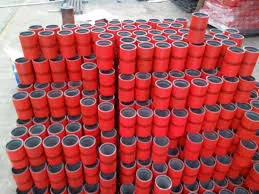- Afrikaans
- Albanian
- Amharic
- Arabic
- Armenian
- Azerbaijani
- Basque
- Belarusian
- Bengali
- Bosnian
- Bulgarian
- Catalan
- Cebuano
- Corsican
- Croatian
- Czech
- Danish
- Dutch
- English
- Esperanto
- Estonian
- Finnish
- French
- Frisian
- Galician
- Georgian
- German
- Greek
- Gujarati
- Haitian Creole
- hausa
- hawaiian
- Hebrew
- Hindi
- Miao
- Hungarian
- Icelandic
- igbo
- Indonesian
- irish
- Italian
- Japanese
- Javanese
- Kannada
- kazakh
- Khmer
- Rwandese
- Korean
- Kurdish
- Kyrgyz
- Lao
- Latin
- Latvian
- Lithuanian
- Luxembourgish
- Macedonian
- Malgashi
- Malay
- Malayalam
- Maltese
- Maori
- Marathi
- Mongolian
- Myanmar
- Nepali
- Norwegian
- Norwegian
- Occitan
- Pashto
- Persian
- Polish
- Portuguese
- Punjabi
- Romanian
- Russian
- Samoan
- Scottish Gaelic
- Serbian
- Sesotho
- Shona
- Sindhi
- Sinhala
- Slovak
- Slovenian
- Somali
- Spanish
- Sundanese
- Swahili
- Swedish
- Tagalog
- Tajik
- Tamil
- Tatar
- Telugu
- Thai
- Turkish
- Turkmen
- Ukrainian
- Urdu
- Uighur
- Uzbek
- Vietnamese
- Welsh
- Bantu
- Yiddish
- Yoruba
- Zulu
casing coupling dimensions
Understanding Casing Coupling Dimensions in Oil and Gas Operations
Casing and coupling are critical components in the oil and gas industry, integral to the construction and maintenance of wells. Proper understanding of casing coupling dimensions is essential for ensuring the structural integrity and efficiency of drilling operations. This article delves into the significance of casing and coupling dimensions, their types, and the implications of these dimensions for well construction.
What is Casing?
Casing refers to the series of pipes that are installed in a drilled well to stabilize the wellbore, prevent the collapse of the surrounding geological formations, and protect groundwater from contamination. Casing plays a crucial role in facilitating a safe and efficient drilling process by providing structural support and isolating different layers of geological materials.
Understanding Couplings
Couplings are fittings used to connect two sections of casing together. They serve as transitional components that help maintain the integrity of the well while allowing for flexibility in case of thermal expansion or contraction. The dimensions of couplings—like their length, outer diameter (OD), and inner diameter (ID)—are critical for ensuring a proper, leak-proof connection between casing strings.
Importance of Dimensions
The dimensions of casings and couplings are standardized to ensure compatibility and safety during drilling operations. The most common standards used in the industry are established by the American Petroleum Institute (API). This standardization addresses the dimensions of casing pipes, including their outer and inner diameters, wall thickness, and various grades of steel, which affect their strength and performance under pressure.
1. Outer Diameter (OD) The OD is crucial for determining the casing’s fit within the wellbore. It must be precisely measured to ensure compatibility with the drilling tools and other components along the well.
casing coupling dimensions

2. Inner Diameter (ID) The ID affects the flow capacity of the well; a larger ID can accommodate more fluid and create less resistance to flow. The ID should be considered when estimating production rates and designing the well for optimal performance.
3. Wall Thickness The wall thickness of the casing is directly related to its strength. Thicker walls are better suited for high-pressure environments, preventing collapse under extreme conditions.
4. Thread Specifications Casing couplings often feature threaded ends to enable solid connections. The thread dimensions, including type and pitch, must align perfectly to ensure no leaks occur during operation.
Implications of Incorrect Dimensions
If the casing or coupling dimensions are incorrect, several issues can arise. Poorly fitted casings can lead to wellbore instability, which might result in sloughing or collapse of the well. Similarly, mismatched couplings can create weak points susceptible to leaks, potentially leading to hazardous gas migrations or contamination of freshwater aquifers.
Conclusion
Casing coupling dimensions are fundamental aspects of well construction within the oil and gas industry. Understanding these dimensions ensures that casing strings are correctly fitted together, maintaining the integrity of the well while optimizing flow efficiency. Given the harsh environments in which wells operate, adhering to standardized dimensions minimizes risks and promotes safety and reliability throughout the drilling process.
By keeping abreast of advancements in casing and coupling technologies, industry professionals can enhance their operational effectiveness and mitigate potential challenges. As the demand for oil and gas continues to evolve, the importance of precise casing coupling dimensions will remain a critical factor in successful drilling and extraction operations. Proper planning and implementation in this area can lead to improved production rates and a safer working environment, ultimately contributing to the overall productivity of the oil and gas industry.
-
Well Casing Extension Couplings – Applications and InstallationNewsJun.06,2025
-
Types of Crossover Subs in Drilling & CompletionNewsJun.06,2025
-
Key Features of High-Quality Tubing Pup JointsNewsJun.06,2025
-
Installation and Maintenance Tips for Steel Couplings for PipeNewsJun.06,2025
-
How to Select the Right Pup Joint for Oil & Gas OperationsNewsJun.06,2025
-
Applications of Stainless Steel Pipe CouplingsNewsJun.06,2025







